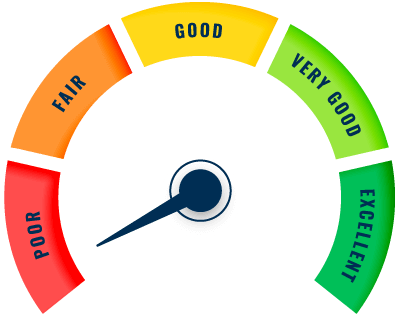Making Overstocking and Understocking Just a Bad Memory
Built For

Making Overstocking and Understocking Just a Bad Memory

Inventory management can be a delicate balancing act. If you stock too much, you end up with overstocked shelves and wasted capital. Stock too little, and you risk running out of products, leading to missed sales and unhappy customers. But what if there was a way to make overstocking and understocking just a bad memory?
In this article, we’ll explore the common causes of overstocking and understocking and explore practical strategies to prevent them. We’ll also highlight how inventory management software can be the key to maintaining optimal stock levels. So, let’s get started on the path to more efficient, profitable, and hassle-free inventory management!
Understanding Overstocking and Understocking
Overstocking
Overstocking occurs when a company has more stock than it can sell, tieing up valuable capital, increasing storage costs, and leading to potential losses if the products become obsolete or damaged. For instance, imagine an online clothing retailer ordering excess winter coats. If the coats don’t sell before the season ends, the retailer might have to discount them heavily, cutting into profits.
Understocking
On the flip side, understocking happens when there isn’t enough inventory to meet customer demand, leading to missed sales opportunities, frustrated customers, and potential damage to the business’s reputation. Picture an online electronics website that runs out of the latest product shortly after its release. Customers eager to purchase the product might go elsewhere, resulting in lost sales and disappointed customers.
The Negative Impacts
Both overstocking and understocking have significant negative impacts on businesses:
- Financial Strain: Overstocking ties up cash that could be used elsewhere in the business, while understocking results in missed revenue opportunities.
- Storage Issues: Excess inventory requires more storage space, increasing warehousing costs. Conversely, inadequate stock levels can disrupt efficient warehouse operations.
- Customer Satisfaction: Overstocking can lead to excess inventory that needs to be discounted, potentially devaluing the brand. Understocking can cause customer frustration and loss of trust when products are unavailable.
- Operational Inefficiencies: Both scenarios can lead to inefficiencies in managing inventory, reordering processes, and overall supply chain disruptions.
Understanding the balance between overstocking and understocking is crucial for maintaining efficient and profitable inventory levels.
Causes of Overstocking and Understocking

Poor Demand Forecasting
One of the primary causes of both overstocking and understocking is inaccurate demand forecasting. Without reliable data and insights, businesses may overestimate or underestimate the demand for their products. This can lead to ordering too much or too little inventory, both of which have their own set of problems.
Inefficient Inventory Management Practices
Manual inventory management or outdated systems can result in errors and mismanagement of stock levels. Inefficient practices, such as lack of real-time tracking and delayed data entry, contribute to inaccuracies that can snowball into overstocking or understocking situations.
Lack of Real-Time Inventory Visibility
Making informed decisions about reordering and stock adjustments is challenging without real-time visibility into inventory levels. This lack of transparency can lead to over-ordering to be safe or under-ordering due to outdated inventory information.
Seasonal Fluctuations and Trends
Seasonal changes and market trends can significantly impact inventory levels. Businesses that do not account for these fluctuations may find themselves with excess stock after a season ends or insufficient stock during peak demand periods. For example, a retailer may overstock holiday decorations but understock beachwear as summer approaches.
Supplier Inconsistencies
Supplier reliability plays a crucial role in maintaining optimal inventory levels. Inconsistent supplier performance, such as delivery delays or variations in order quantities, can disrupt inventory balance. Businesses may overorder to compensate for unreliable suppliers or face understocking if suppliers fail to deliver on time.
Understanding these causes helps identify the root of overstocking and understocking issues.
Strategies to Prevent Overstocking

Implementing Accurate Demand Forecasting Methods
Accurate demand forecasting is essential for preventing overstocking. By analyzing market trends, historical sales data, and seasonal patterns, businesses can make more informed decisions about how much inventory to order. Inventory management software can automate this process, providing reliable forecasts that help avoid excess stock.
Using Inventory Management Software for Real-Time Tracking
Real-time tracking of inventory levels is crucial for maintaining balance. Inventory management software offers real-time visibility, allowing businesses to monitor stock levels continuously and make timely decisions about reordering or adjusting stock.
Regularly Reviewing and Adjusting Inventory Policies
Inventory policies should be regularly reviewed and adjusted based on current sales data, market conditions, and business goals. This proactive approach ensures optimal inventory levels and prevents overstocking and understocking.
Building Strong Relationships with Suppliers
Strong relationships with reliable suppliers can help prevent overstocking. Businesses can negotiate flexible terms with suppliers, such as smaller order quantities or faster delivery times, reducing the need to overstock.
Strategies to Prevent Understocking
Conducting Regular Inventory Audits and Cycle Counts
Regular audits and cycle counts help identify discrepancies between recorded and actual inventory levels. This practice ensures accurate inventory data, allowing businesses to address potential understocking issues before they become critical.
Utilizing Historical Sales Data for Better Forecasting
Analyzing historical sales data provides insights into customer purchasing patterns and trends. This information can be used to forecast future demand more accurately, helping to maintain adequate stock levels.
Maintaining Safety Stock for High-Demand Items
Safety stock buffers against unexpected spikes in demand or supply chain disruptions. By maintaining a reserve of high-demand items, businesses can prevent stockouts and continue to meet customer needs without interruption.
Ensuring Effective Communication with Suppliers
Effective supplier communication is essential for timely deliveries and optimal stock levels. Clear and regular communication helps address potential delays, manage expectations, and ensure a consistent supply of products.
Role of Inventory Management Software in Preventing Overstocking and Understocking

Real-Time Inventory Tracking and Visibility
Inventory management software provides real-time tracking and visibility into inventory levels, ensuring that businesses always have up-to-date information for making informed decisions.
Setting Up Reorder Point Alerts
Reorder point alerts in inventory management software ensure that stock is replenished before it runs out. By setting minimum inventory levels, the system can trigger reorder alerts, prompting purchasing managers to reorder, preventing stockouts, and maintaining a steady supply of products.
Demand Forecasting Capabilities
Demand forecasting capabilities analyze historical data, market trends, and seasonal patterns to provide accurate predictions. This helps businesses plan inventory levels more effectively, avoiding excess stock and stockouts.
Reporting and Analytics for Informed Decision-Making
Comprehensive reporting and analytics provide insights into inventory performance, helping businesses identify trends, optimize stock levels, and make data-driven decisions.
Benefits of Eliminating Overstocking and Understocking
- Improved cash flow and reduced holding costs. By maintaining optimal inventory levels, businesses improve cash flow and reduce holding costs associated with excess stock.
- Enhanced customer satisfaction and retention. Consistently having the right products in stock enhances customer satisfaction and retention, leading to repeat business and positive word-of-mouth.
- Increased efficiency and productivity in operations. Efficient inventory management streamlines operations, reducing time spent on manual tracking and adjustments and allowing employees to focus on more strategic tasks.
- Better utilization of storage space. Maintaining optimal stock levels ensures better storage space utilization, reducing the need for additional warehousing and associated costs.
- Ability to capitalize on sales opportunities. With the correct inventory levels, businesses can quickly respond to market demands and capitalize on sales opportunities, driving growth and profitability.
Best Practices for Maintaining Optimal Inventory Levels
- Continuous monitoring and adjustment of inventory practices. Regularly monitor inventory levels and adjust practices based on current data and trends to maintain optimal stock levels.
- Leveraging data analytics for proactive inventory management. Use data analytics to anticipate demand changes and proactively manage inventory, preventing both overstocking and understocking.
- Training staff on inventory management best practices. Ensure staff are well-trained in inventory management best practices to maintain accuracy and efficiency.
Preventing overstocking and understocking is crucial for efficient and profitable inventory management. By implementing effective strategies, businesses can maintain optimal stock levels, improve cash flow, enhance customer satisfaction, and drive growth. Inventory management software is pivotal in achieving these goals, making overstocking and understocking just a bad memory.
Call us at 817-870-1311





